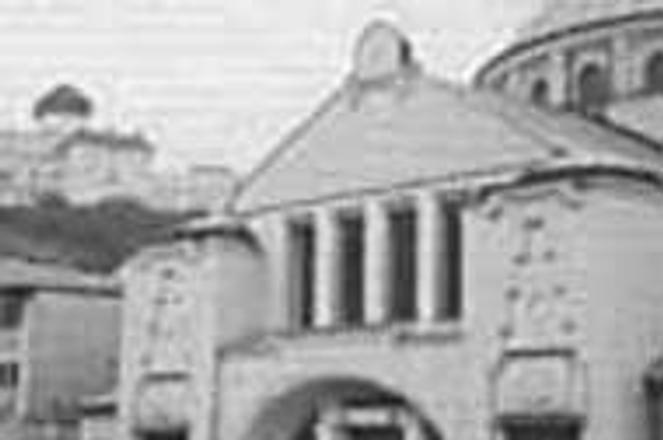Danka Hašková
In northwestern Slovakia, where the Váh valley expands to the fertile lowland guarded by the Carpathian, Strážov, and Považský Inovec hills, lies the city of Trenčín.
Dominating the city and its surroundings is Trenčín Castle, built on an old Slavic fortification as a center of political and military power in the 11th century.
The castle's oldest walled building is the rotunda, dating from the 11th century. The main tower, the clock tower, the palaces of Ľudovít and Barbora, the palace of the family Zápoľský were built later.
As with many castles, this one has its own fairy tale. The legend is rooted in the castle's 79-meter-deep well. When Štefan Zápoľský, a commander of Hungarian King Mathias's army, returned victorious from war with the Turks, he brought a servant named Fatima to his wife. When Omar, the wealthy Turk from whom Fatima was taken, found out, he offered his wealth to the castle lord for her ransom. But Zápoľský stood firm. "I gave her to my wife as a present, and I do not change my word," Zápoľský said. "I am rich enough." "But what do you not have?" asked Omar. "I have everything," answered the lord. But a moment later he added, "I have no water."
Omar saw a ray of hope. "If I force this rock to give water," he said, "will you return my Fatima to me?" The lord agreed. The Turks dug for three years and when at last water appeared, Omar drew it with a golden glass and gave it to Zápoľský with the words: "Here is the water, but your heart was harder than this rock."
After the Tartars retreated in 1296, following a failed invasion of the castle, Trenčín's Matúš Čák controlled most of Slovakia for 20 years and earned the moniker "Lord of the Váh and the Tatras." Čák built a palace in the castle area and in 1475, the castle was acquired by the Zápoľský family, who enlarged it. In 1790 it was destroyed by fire. Reconstruction started in 1956 and in 1961 it was declared a national cultural monument. One of the most beautiful views over the Váh valley is from the Matúšová veža tower.
Under the castle spreads Brezina, one of the oldest parks of the middle Váh valley. The oblong main square which has had many names over the years now goes by Mierové námestie (Peace square). Mierové nám. is characterized by renaissance houses from the 16th and 17th centuries. Today the Museum of Trenčín is in the baroque former county hall.
On the lower part of the square is a complex of landmarks. The double-steepled Catholic neo-baroque Church of St. Francis of Xaver was built between 1653 and 1657. Its simple exterior contrasts with the rich interior, featuring frescos by Krištof Tausch, a student of the Italian painter Andreas del Pozzo. The monastery, finished in 1662, is next door. Now it houses the Gallery of Miloš A. Bazovský, one of Slovakia's most important, and a Catholic grammar school.
During socialism, Trenčín was developed as an industrial town, especially for clothing, textile and machine industries. Today the dominant firms are the joint-stock companies OZETA (a clothing producer), Merina (textiles), Old Herold Ferm (spirits), and Letecké Opravovne (servicer and renovator of aircraft). With its exhibition ground, built for the annual "Trenčín - the town of fashion" exhibit, Trenčín is becoming an important center for Slovak and international trade fairs.
Trenčín is also home to four well-known Slovak folk dance groups: Kubran, which is 60 years old; Trenčan, 45 years; Družba, 40; and Radosť, 15. Trenčín's most popular cultural events include the festival of wind instruments, the folklore meeting "Under Trenčín Castle" and the Christmas Festival.
Since 1991, a branch of City University, an American school that was Slovakia's first private university aimed at the undergraduate study of management, has been based in Trenčín.
As much as Trenčín offers visitors, the town is just as attractive as a starting place for trips to surrounding sites and activities. From here, you can go hiking to Čachtice castle, horseback riding in Soblahovo, Nozdrkovce or Motešice, or cruise the Váh.


